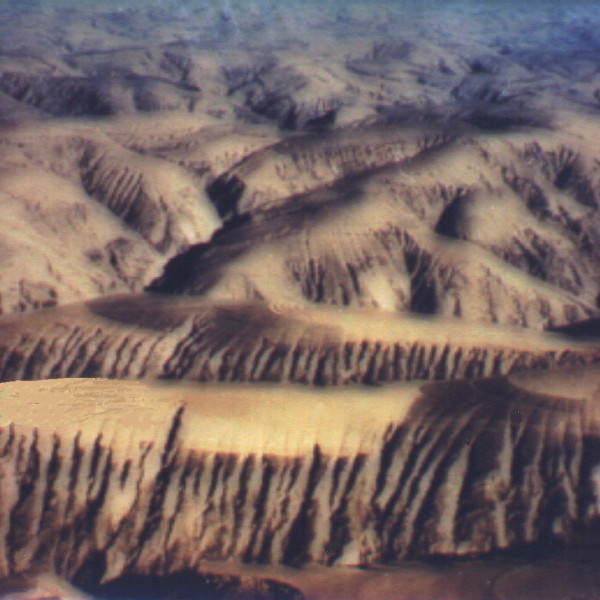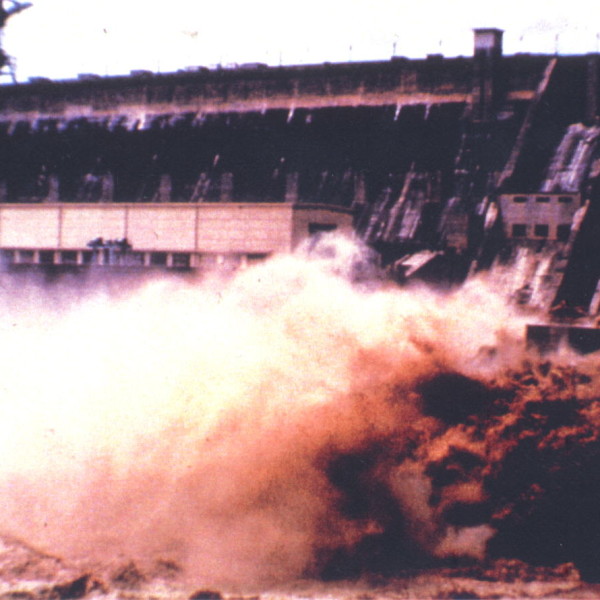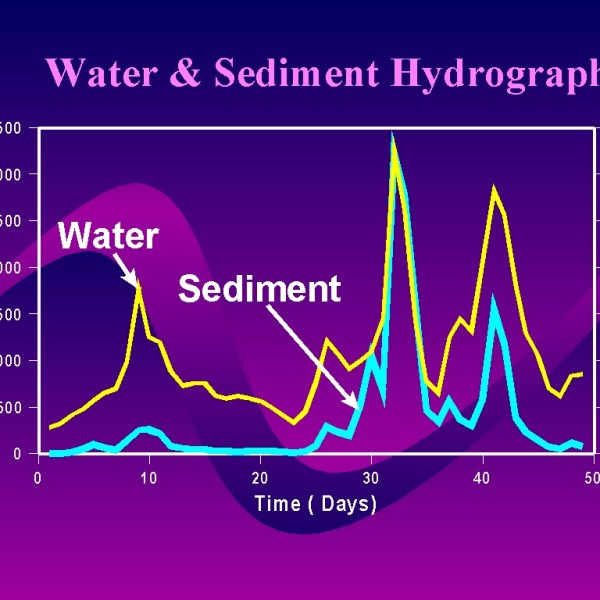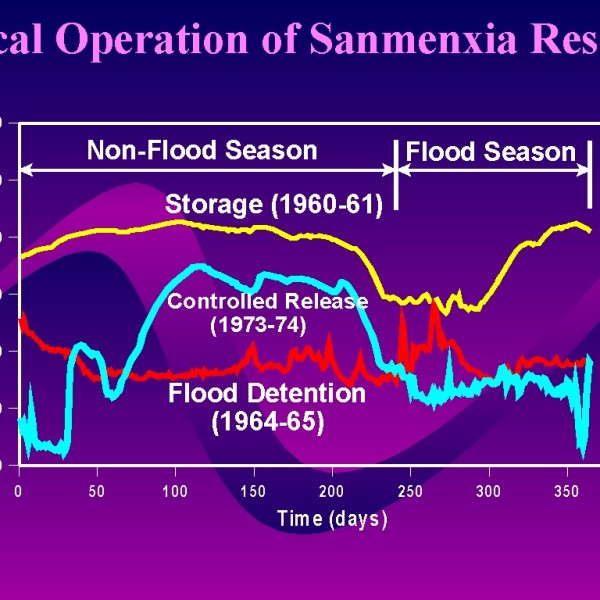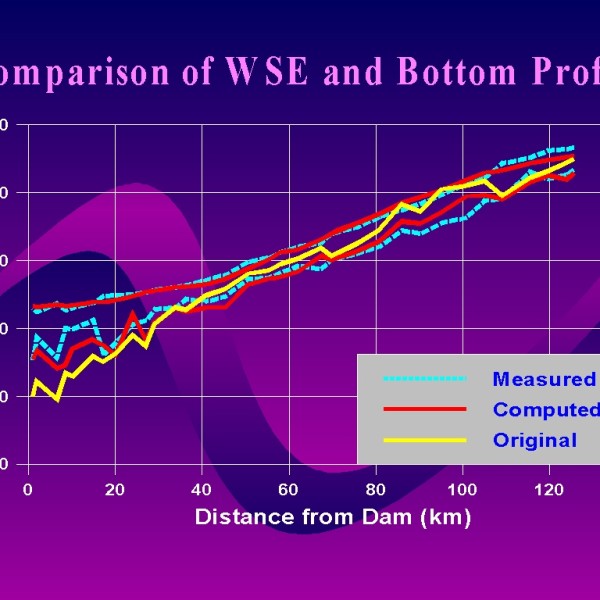
- Home
- Firm Profile
- Core Services
- Projects
- About US
- Contact Us
SANMENXIA RESERVOIR SEDIMENT MODELING
Sanmenxia Reservoir is located in the lower part of the Middle Yellow River in China. It is a multi-purpose hydro-project mainly used for flood control. Figure 1 shows the Sanmenxia Dam and its reservoir with one of its downstream outlets in operation.The drainage area above the dam amounts to 688,000 km2. The Yellow River cuts through an extensive loess plateau where a 439,000 km2 portion of it suffer from severe soil erosion (Figure 2). The channel flows carry up to 60 percent solids by weight consisting of mainly fine sands and silts. Due to the large quantities of sediment carried by the Yellow River, Sanmenxia Reservoir was filled within several years after its completion. Through sediment flushing during flooding season, life of the reservoir was extended (Figure 3).
In this World Bank project, numerical modeling of a 150 km segment of the Yellow River upstream from the Sanmenxia Reservoir was accomplished by using the GSTARS model that was developed for US Bureau of Reclamation by Dr. A. Molinas, Hydrau-Tech, Inc. GSTARS is a water and sediment routing model for solving complex river engineering problems. This model is a semi-two dimensional model that uses stream tubes to define lateral as well as the longitudinal variation of channel flows. Stream tubes are imaginary tubes bounded by streamlines. Since the discharge between streamlines remain constant in the direction of flow, the closer the streamlines and narrower the stream tubes, the faster the flow velocities; Similarly, the wider apart the streamlines and wider the stream tubes slower the flow velocities. For ideal flows total energy is constant along the stream tubes; for real fluids it is possible to account for energy losses and compute velocity and depth variation along individual tubes. The basic equations used in the model include the energy equation, the momentum equation, the sediment continuity equation, and the various optional sediment transport equations. For the Yellow River application, the GSTARS model is modified to accommodate site-specific characteristics of the Yellow River including a new sediment transport equation for fine sediments, non-equilibrium sediment transport, and the computation of sediment transport capacity by size fraction.
The GSTARS model for the Yellow River has been successfully used to simulate the typical reservoir operations given in figures 4 and 5. Figure 4 shows the typical water and sediment inflow hydrographs into the reservoir. Figure 5 shows the adopted reservoir operation rules at different time periods. Using this information, measured channel topographies, roughness values, and sediment characteristics, numerical verification and validation runs were conducted. Figure 6 shows the close agreement with observed values. Next, using GSTARS reservoir operation rules were refined to optimally pass the oncoming sediments with minimal retention in the reservoir.


